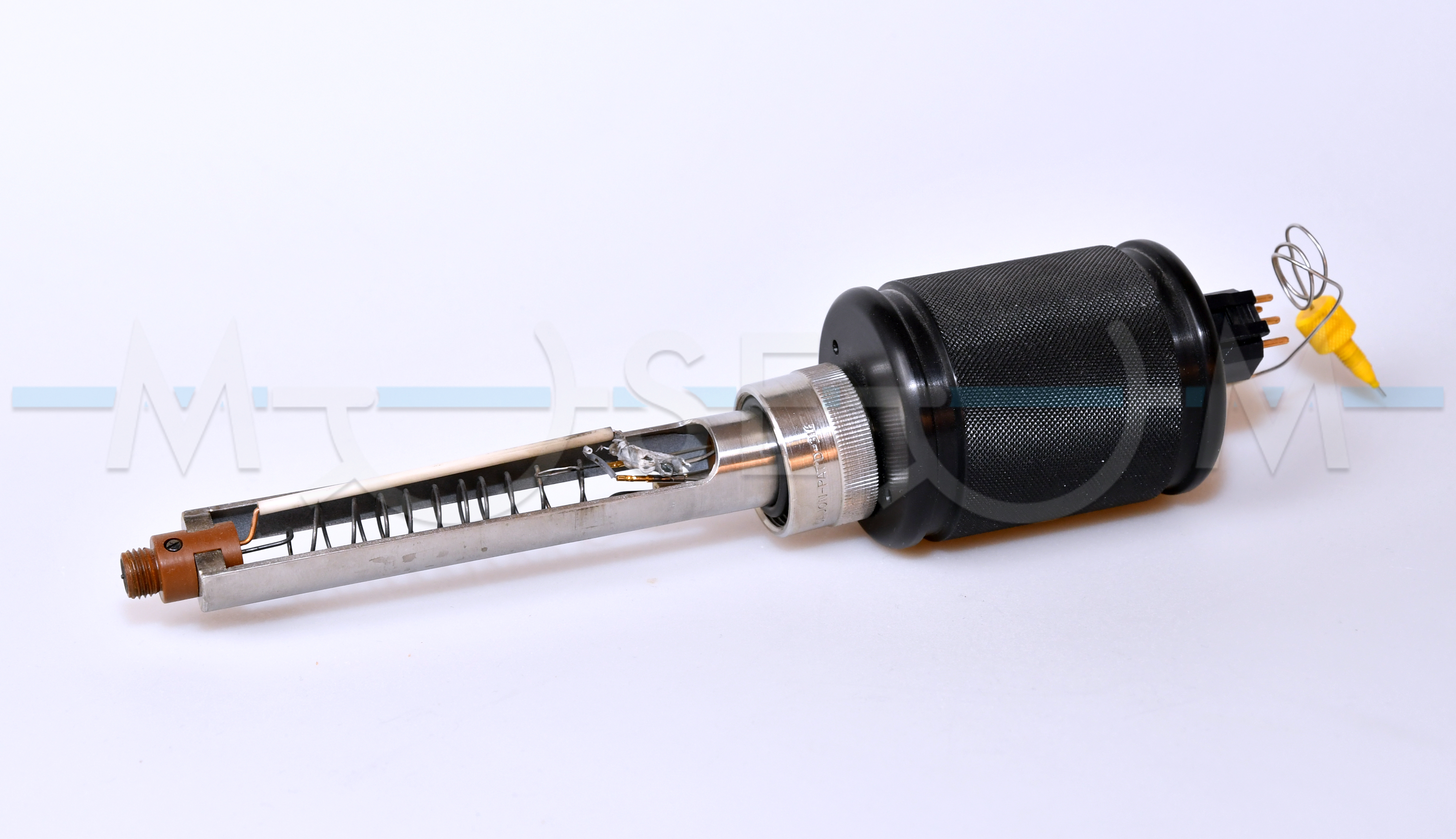Categories of exhibits
Thermospray probe
Exhibit no. 567
In many applications, the sample to be analyzed exists as a solution, for instance as effluent from a liquid chromatography (LC). In such cases, most of the solvent must be removed in the initial steps of mass-spectrometric analysis. If the solvent were not removed, a large volume of solvent vapor would prevent the spectrometer from working. Thermospray (TSP) was an efficient method for solvent removal and meant a breakthrough for interfacing of LC with mass spectrometry. In pure TSP, a solution containing volatile buffer like ammonium acetate was evaporated from a heated capillary into a heated chamber. The sample solution was quickly vaporized resulting in a spray of small droplets. As the solvent evaporated, the analytes formed adducts with ions from the buffer salt. TSP was performed on mass spectrometers with EI/CI sources. To expand the use of TSP to lower-polarity systems, modified modes of operation were developed including filament ionization or discharge ionization.
The exhibit is a thermospray probe used with the triple quadrupole mass spectrometer TSQ 70 manufactured by Finnigan MAT around 1986. The probe contains a length of narrow diameter (0.015 mm i.d. by 1.5 mm o.d.) hypodermic stainless steel tubing known as a vaporizer. The vaporizer was heated under external control with feedback provided by a thermocouple. A combination of the flow rate and heating of the vaporizer induced the formation of a supersonic jet of fine mist droplets at or near the exit end of the tubing.





